#solar inverter
Text
Solar Panels with Micro Inverters
These are the best module level integrated electronics micro inverters or DC Optimizers.
If you can pay extra , then Solar Panel combined with a (micro) inverter or optimizer is the most effective for performance and monitoring. Many EPC companies are scared to offer such a solution which diagnoses issues with the individual solar panel (or system ) and increase the work of EPC companies. The better EPCs companies see this technology as a good AMC opportunity.
A number of electronic devices for module level maximum power point tracking (MPPT) have appeared in the market or are under development. The main objective of these devices is to maximize energy harvest under non-ideal conditions, such as with partial shading, soiling, non-uniform orientation of modules, differential temperature, and module mismatch. Such devices can be grouped into two broad categories from the working principle:
DC Power Optimizers – Devices that optimize the DC power output of a module in order to optimize the output of the string. The system still needs a DC to AC inverter on string level before the power can be fed to the grid.

Tigo DC — DC optimizer needs an external inverter with mandatory rapid shutdown ( USA)
Microinverters –devices that track the maximum power of each solar panel (MPPT) and converts the solar power (DC) to household power (AC) at module level.
Other features to various extents have been implemented in these devices, such as performance monitoring on module level, remote shut-off, fire detection, active diodes, theft deterrence, and hot spot protecting functions.
Note: Click on SUGGEST in PathToGreenhomes.com and apply FILTERS to get more recommended models. Use ☑ [Get Quote] to send your “Selected Models” to your nearest installer to receive a competitive quote !!
3 notes
·
View notes
Text
Which inverter is best for solar in 2024?

The best inverter for solar depends on the capacity of the solar panel. If you are looking for an inverter for solar then this article will help you find the best inverter for solar. So in this article, I am going to inform you about the best inverter for solar in 2024.
Benefits of a Solar Inverter
There are many benefits of the solar inverter. Some of the main benefits of solar inverter are discussed here.
Solar inverter technology provides energy independence, reduces the reliance on conventional power, contributes to environmental sustainability and durability, and lowers electricity bills. It also promotes clean energy and minimizes carbon footprints.
youtube
Types of solar inverters
Mainly there are 3 types of solar inverters which are available in India. On-grid solar inverter, off-grid solar inverter, and hybrid solar inverter. Let’s discuss them below.
1. On grid solar inverter: On grid solar inverter is a grid-connected solar inverter. It is dependent on the grid connection which means the electricity will be supplied through the inverter by the electricity board. If there is electricity available by the electricity board it will work, but if there is no electricity available by the electricity board then it will not work. The advantages of on grid inverters are that they are the most commonly used solar inverters that are adopted by customers due to its working philosophy, it will cut the whole load during peak hours in an office, no battery storage is required, no maintenance cost, and no generation loss.
2. Off grid solar inverter: Off grid solar inverter is a battery-based solar inverter. It is not dependent on electric grids, but it has a battery to store the excess electricity. It is installed in locations where electricity supply is less or not available. It can supply power in rainy or windy days. Off grid solar inverter is used for battery charging and load sharing with the availability of the PV system and feed load by the charged battery when there is no availability of the PV system.
3. Hybrid solar inverter: The hybrid solar inverter is a combination of both on-grid and off-grid solar inverters. It has multiple sources to supply electricity such as solar/PV, grids, storage batteries, and hydro plants. It is a complicated system in which synchronization is required between all the connected systems and loads.
Best inverter for solar in 2024
The best inverter for solar in 2024 is the “hybrid solar inverter”. As mentioned above the hybrid solar inverter is a combination of both on-grid and off-grid solar inverter. It has battery storage which can store the excess electricity for later use. The hybrid system works with the availability and the non-availability of electricity.
Conclusion
I hope you got the answer. If you are looking for an inverter then you should consult the best solar inverter manufacturer in your city. They will guide you and help you to choose the best inverter for solar.
2 notes
·
View notes
Text
Hi everybody! Look at here.
Our company, Shenzhen Youess Energy Storage Technology Co., Ltd, have more than 10 years of technology research and development experience and engineering design experience in the field of photovoltaic and energy storage.
Corporate mission: To bring clean energy to every household🌱.
Corporate vision: To became a global leader in intelligent energy.
Enterprise core values: love struggle,pragmatic and promising.
What can you get from our company?
☞The most competitive price.
☞Provide OEM/ODM service.
☞Oversea warehouse stock and timely delivery.
☞Free after-sales maintenance.
☞Professional solar system solution.
Company website: www.suness.com
Alibaba website: suness.en.alibaba.com
Email: [email protected]
Wechat/Whatsapp: +86 18372643994
More information for:www.suness.com/www.youess.com
2 notes
·
View notes
Text
The Benefits of Installing Solar Panels during Construction
There are several factors to take into account when constructing a new building. The energy use of the structure is among the most crucial. Many builders are turning to solar energy as a sustainable solution as energy costs are rising and carbon emissions need to be reduced. We'll talk about the advantages of installing solar panels while building in this blog post.
Lower Costs of Energy
You can generate your own electricity and lessen your dependency on conventional power sources by adding solar panels into the architecture of your building. In the long run, this can result in significant cost savings, particularly with the rise in energy prices. Additionally, many utilities provide rebates or other incentives for solar installations, substantially lowering the project's initial cost.
Reduced Carbon Footprint
Since solar energy doesn't emit any greenhouse gases or other pollutants, it is a clean and renewable energy source. Utilizing solar energy will enable you to lessen the carbon footprint of your structure and promote a more sustainable future.
Increased Property Value
According to studies, homes with solar installations are more appealing to buyers and can fetch a higher price when they're put up for sale. This is due to the fact that consumers are aware of both the favorable environmental effects and long-term financial advantages of solar energy.
Enhanced Durability
Solar panels can also aid in weatherproofing your building. They can add an extra layer of insulation when installed on a rooftop, which helps to control inside temperature and lower heating and cooling expenses. They can shield your roof from harm brought on by the elements and other outside factors.
FAQs:
Q: How long do solar panels last?
A: Solar panels' lifespans might vary, but the majority are meant to endure for at least 25 years.
Q: How much upkeep are solar panels required of?
A: Solar panels need relatively little care; normally, they only need to be cleaned occasionally to get rid of dirt and debris.
Q: How long does it take for a solar installation to pay for itself?
A: A solar installation's payback period can vary based on a number of variables, including the system's size, the cost of local energy, and any available subsidies. Typically, solar panels pay for themselves within 5 to 10 years after installation.
Conclusion:
There are several advantages to incorporating solar panels into your new building project, including cheaper energy expenses, lower carbon emissions, higher property value, and improved longevity. With so many benefits, it's understandable why more and more construction companies are choosing solar energy. So why not think about include solar panel installation in your upcoming construction project? Long-term financial savings aside, you'll also help create a more sustainable future.
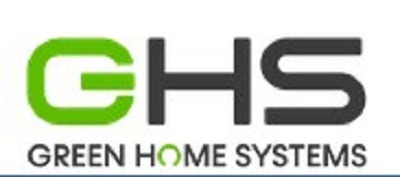
#solar inverter#solar system#solar energy#solar panels#solar power#youtube#organic chemistry#marine biology#anatomy
2 notes
·
View notes
Text
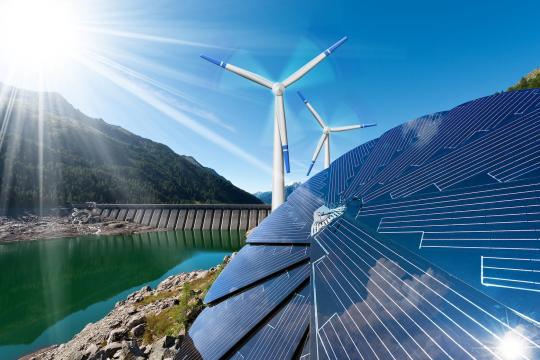
"The benefits of renewable energy go beyond reducing carbon emissions. They include lower energy costs, job creation, and improved public health. Let's make the switch to renewable energy and reap these benefits for ourselves and future generations.
2 notes
·
View notes
Text
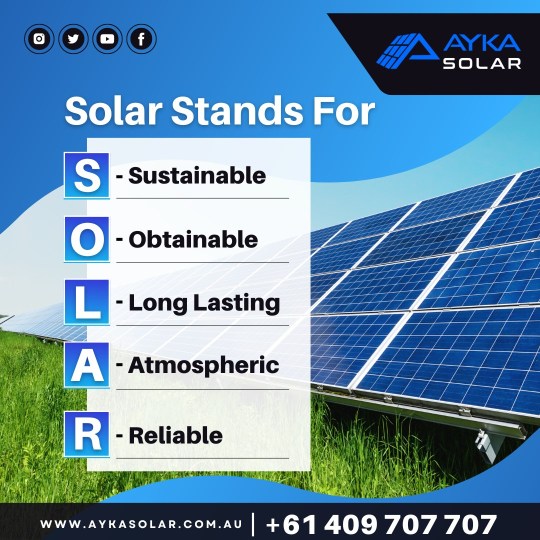
For a better tomorrow, we offer complete energy solutions.
2 notes
·
View notes
Text
Solar TTesla Inverter
Solar panels, solar inverters, solar Home System available. We offer best prices.https://soherwardiasolar.com/tesla-solar-inverter-vmii-3000-24/

3 notes
·
View notes
Text
TALK TO YOUR REPS ABOUT SB 846!
PG&E (Pacific Gas and Electric company), a utility company in California, is trying to keep a power plant of theirs, Diablo Canyon, open. To do this, they want ratepayers to pay a new fee based off of "gross energy consumption", which would include what folks are producing for personal use with solar panels.
This is no longer trying to charge people for energy they use that the company owns, this is trying to charge people for power that THEY PRODUCE FOR THEMSELVES with solar panels that they either ALREADY OWN or already have leases with other companies for the power. This is, essentially, a tax on solar power itself.
It would charge people that are doing their best to make the grid more sustainable, lower their utility bill, and help save the planet. Please, go to the link and do something. Call, e-mail, just do anything you can to help.
#leftist#solar power#solar inverter#solar#renewable energy#clean power plan#clean environment#clean energy#go green#green power#california
1 note
·
View note
Text
How To Install Solar Inverter For Home In India
A solar inverter is a critical component of a solar energy system, responsible for converting the direct current (DC) electricity generated by solar panels into alternating current (AC) electricity that can be used to power electrical appliances and devices in homes, businesses, and other buildings. The inverter’s role is crucial in ensuring the efficient and reliable operation of the solar energy system, as it regulates the voltage, frequency, and overall quality of the electricity output. In addition to converting DC to AC, many modern solar inverters also incorporate features such as maximum power point tracking (MPPT) to optimize energy production, data monitoring capabilities to track system performance, and grid-tie functionality to enable the seamless integration of solar energy with the existing electrical grid. As solar energy continues to gain popularity as a clean and renewable energy source, solar inverters play an increasingly vital role in facilitating the widespread adoption and effective utilization of solar power.

What are the benefits of solar inverter?
Solar inverters offer several benefits in the context of solar energy systems:
Efficient Energy Conversion: Solar inverters efficiently convert the direct current (DC) electricity generated by solar panels into alternating current (AC) electricity, which is compatible with the electrical grid and can be used to power appliances and devices in homes and businesses.
Optimized Energy Production: Many modern solar inverters incorporate maximum power point tracking (MPPT) technology, which continuously adjusts the operating voltage and current of the solar panels to maximize energy production under varying environmental conditions. This optimization helps to extract the maximum amount of energy from the solar panels, improving overall system efficiency.
Grid-Tie Functionality: Grid-tie inverters enable the seamless integration of solar energy with the existing electrical grid. They allow excess electricity generated by the solar panels to be exported to the grid, reducing reliance on grid-supplied electricity and potentially earning credits or compensation from the utility company through net metering programs.
Data Monitoring and Remote Control: Many solar inverters have data monitoring capabilities that allow users to track system performance, energy production, and electricity consumption in real-time. Some inverters also offer remote monitoring and control features, allowing users to adjust settings and troubleshoot issues remotely via a computer or smartphone app.
Reliability and Durability: Solar inverters are designed to withstand outdoor conditions and operate reliably for many years. High-quality inverters are typically backed by warranties and undergo rigorous testing to ensure long-term performance and durability.
Safety Features: Solar inverters incorporate safety features such as ground fault protection, overvoltage protection, and temperature monitoring to prevent electrical hazards and ensure the safe operation of the solar energy system.
Scalability: Solar inverters are available in various sizes and configurations to accommodate different system sizes and applications. They can be easily scaled up or expanded to meet changing energy needs, making them flexible and adaptable to evolving requirements.
What are the types of solar inverters?
Solar inverters come in several types, each designed for specific applications and system configurations. The main types of solar inverters include:
String Inverters: String inverters are the most common type of solar inverters used in residential and commercial solar energy systems. They are typically installed in a central location and connected to multiple solar panels arranged in strings. String inverters convert the DC electricity generated by the solar panels into AC electricity and are known for their simplicity, reliability, and cost-effectiveness.
Microinverters: Microinverters are small inverters installed directly behind each solar panel in a solar energy system. Unlike string inverters, which handle the conversion of DC to AC electricity for multiple panels, microinverters operate independently, converting the DC electricity from each panel into AC electricity. Microinverters offer advantages such as individual panel-level monitoring, improved shading tolerance, and increased system efficiency.
Power Optimizers: Power optimizers are devices installed at the back of each solar panel in a solar energy system, similar to microinverters. However, instead of converting DC to AC electricity, power optimizers optimize the DC electricity output from each panel before it is sent to a central string inverter for conversion to AC electricity. Power optimizers can improve energy production, mitigate shading issues, and enhance system performance, especially in installations with partial shading or uneven panel orientation.
Hybrid Inverters: Hybrid inverters, also known as battery inverters or multi-mode inverters, are designed for use in solar-plus-storage systems that incorporate battery storage. Hybrid inverters can manage both the DC electricity generated by solar panels and the DC electricity stored in batteries, converting it into AC electricity for use in the building or export to the grid. Hybrid inverters offer features such as backup power capabilities, grid independence, and energy management functionalities.
Grid-Tie Inverters: Grid-tie inverters, also known as grid-interactive or grid-connected inverters, are designed to integrate solar energy systems with the existing electrical grid seamlessly. They convert the DC electricity solar panels generate into AC electricity synchronized with the grid’s voltage and frequency. Grid-tie inverters allow excess electricity generated by the solar panels to be exported to the grid, reducing reliance on grid-supplied electricity and potentially earning credits or compensation through net metering programs.
What are the components of a solar inverter?
Solar inverters consist of several key components that work together to convert the direct current (DC) electricity generated by solar panels into alternating current (AC) electricity suitable for use in homes, businesses, and other electrical systems. The main components of a solar inverter include:
DC Input: Solar inverters are connected to the DC output of solar panels, which supply the direct current (DC) electricity generated by the photovoltaic (PV) cells.
Maximum Power Point Tracking (MPPT): Many solar inverters incorporate MPPT technology, which optimizes the performance of the solar energy system by continuously adjusting the operating voltage and current of the solar panels to maximize energy production under varying environmental conditions.
Conversion Stage: The conversion stage of the solar inverter consists of electronic components, such as transistors, capacitors, and transformers, that convert the DC electricity from the solar panels into AC electricity at the desired voltage and frequency.
Output Stage: The output stage of the solar inverter includes components such as filters and voltage regulators that ensure the quality and stability of the AC electricity output. This stage may also include features such as grid synchronization and anti-islanding protection to ensure the safe and reliable operation of the solar energy system.
Cooling System: Solar inverters may be equipped with a cooling system, such as fans or heat sinks, to dissipate heat generated during operation and maintain optimal operating temperatures. This helps to ensure the efficiency and longevity of the inverter components.
Monitoring and Control: Many modern solar inverters are equipped with monitoring and control features that allow users to track system performance, monitor energy production, and adjust settings remotely. This solar inverter for home features may be accessible through a built-in display panel, a web-based interface, or a smartphone app.
Protection Circuitry: Solar inverters incorporate protection circuitry, such as overcurrent protection, overvoltage protection, and ground fault protection, to prevent damage to the inverter and ensure the safety of the solar energy system and connected electrical devices.
Conclusion — solar inverters play a crucial role in the efficient operation and integration of solar energy systems, converting the direct current (DC) electricity generated by solar panels into alternating current (AC) electricity suitable for use in homes, businesses, and electrical grids. With advancements in technology, solar inverters offer features such as maximum power point tracking (MPPT) for optimizing energy production, grid-tie functionality for seamless integration with the existing electrical grid, and monitoring and control capabilities for tracking system performance and adjusting settings remotely. These features, combined with robust protection circuitry and cooling systems, ensure the reliable and safe operation of solar energy systems, maximizing energy production and minimizing downtime.
0 notes
Text
Harnessing Solar Power: Exploring Solar Inverters and Expanding Business with Loom Solar
In an era marked by increasing environmental consciousness and the pursuit of sustainable energy solutions, solar power has emerged as a prominent contender. At the heart of every solar energy system lies a vital component: the solar inverter. However, understanding the significance of solar inverters is just one aspect of navigating the renewable energy landscape. To truly capitalize on the opportunities presented by solar energy, businesses must also consider strategic partnerships and avenues for growth. In this article, we delve into the importance of solar inverters, coupled with insights on expanding business opportunities through collaboration with Loom Solar.
Understanding Solar Inverters:
Solar inverters are the linchpin of photovoltaic (PV) systems, responsible for converting the direct current (DC) electricity generated by solar panels into alternating current (AC) electricity suitable for powering homes, businesses, and the grid. Their role is indispensable, as most electrical appliances and infrastructure operate on AC power. Solar inverters ensure compatibility, efficiency, and seamless integration of solar energy into our daily lives.
Important Points about Solar Inverters:
Efficiency Optimization: Solar inverters play a crucial role in maximizing the efficiency of solar power systems. By converting DC electricity into AC electricity at optimal levels, inverters ensure that solar panels operate at peak performance, thereby maximizing energy harvesting potential.
Grid Connectivity: Solar inverters facilitate the connection of solar power systems to the electrical grid, enabling surplus energy to be exported back into the grid. This promotes grid stability, enhances energy accessibility, and incentivizes the adoption of solar energy through net metering programs.
Energy Independence: Solar inverters empower individuals and businesses to reduce dependence on centralized power sources by harnessing solar energy. Through efficient inverters, users can generate their electricity, enhance energy security, and reduce their environmental footprint.
Environmental Sustainability: Solar power systems powered by inverters contribute to environmental sustainability by reducing greenhouse gas emissions and reliance on non-renewable energy sources. By harnessing clean, renewable energy from the sun, solar inverters play a vital role in combating climate change and preserving natural resources.
Expanding Business with Loom Solar:
Loom Solar is a leading provider of solar energy solutions, offering a wide range of high-quality solar panels, inverters, batteries, and accessories. Partnering with Loom Solar presents numerous opportunities for businesses looking to expand their presence in the renewable energy market. Here's how:
Product Diversity: By collaborating with Loom Solar, businesses can diversify their product offerings and cater to a broader range of customer needs. Loom Solar's extensive product portfolio includes a variety of solar panels, inverters, and accessories suitable for residential, commercial, and industrial applications.
Quality Assurance: Loom Solar is known for its commitment to quality and reliability. Partnering with Loom Solar allows businesses to align themselves with a trusted brand known for delivering high-performance solar energy solutions that meet customer expectations and industry standards.
Technical Expertise: Loom Solar provides comprehensive technical support and expertise to its partners, ensuring seamless integration and operation of solar energy systems. Businesses can leverage Loom Solar's knowledge and resources to enhance their capabilities and deliver exceptional service to their customers.
Market Reach: Collaborating with Loom Solar provides businesses with access to a vast network of customers and markets. Loom Solar's established presence and reputation in the renewable energy industry can help businesses reach new audiences and expand their market reach.
Conclusion:
Solar inverters are indispensable components of solar energy systems, enabling the efficient conversion of sunlight into usable electricity. By understanding the importance of solar inverter and strategically partnering with industry leaders like Loom Solar, businesses can capitalize on the growing demand for renewable energy solutions. Together, we can harness the power of the sun to create a cleaner, greener, and more sustainable future for generations to come.
1 note
·
View note
Text

Another Completed Solar Install by the NXTGEN Energy Team 🔥 👏
Look at the sun on those new shiny panels 🤩
The NXTGEN Energy Team installed:
☀ 13 x Jinko Tiger Neo 435W Solar Panels (5.6kWp)
💚 5.5kW SunSynk Hybrid Solar Inverter (5.5kW)
🔋 5.32kWh SunSynk Solar Battery Storage (5.32kW)
🦅 BirdBlocker to keep those pesky pigeons out!
Looking at get Solar Panels? Contact NXTGEN Energy on 01268 928 690, Email [email protected] or visit our website at https://nxtgenenergy.co.uk
0 notes
Text
Home Battery Safety: Busted Myths and Peace of Mind with OneSun
We're passionate about bringing clean, reliable solar energy to your home. One common concern we hear is about home solar battery safety, particularly the risk of explosion. Here, we'll address this concern and assure you that solar batteries are built with your safety in mind.
The EV Connection: Apples and Oranges
While some electric vehicle (EV) batteries have experienced rare incidents of fire or explosion, it's important to understand the key differences between EV batteries and home solar batteries.
Battery Chemistry: EVs often use Lithium-ion batteries with high energy density for maximum range. Home solar batteries typically use Lithium Iron Phosphate (LiFePO4) batteries, known for their superior safety and thermal stability.
Operating Environment: EV batteries undergo extreme stress during charging and discharging cycles, especially in hot climates. Home solar batteries operate within a controlled temperature range in your home, minimizing risk.
Safety Features: Modern home solar batteries come equipped with multiple safety features, including overcharge and discharge protection, temperature monitoring, and pressure relief valves. OneSun prioritizes using batteries with the highest safety certifications.

Peace of Mind with OneSun
At OneSun, we go the extra mile to ensure your safety:
Rigorous Selection Process: We only use batteries from reputable manufacturers with proven safety records.
Expert Installation: Our certified technicians install your battery system according to strict safety protocols.
Ongoing Support: We offer comprehensive monitoring and maintenance plans to ensure your battery's continued safe operation.
Safety First, Sustainability Always
Solar batteries are a vital component of a complete solar energy system, allowing you to store excess solar energy for use at night or during power outages. With proper installation and maintenance, home solar batteries are a safe and reliable way to maximize your solar energy use.
Ready to Make the Switch to Solar with Confidence?
OneSun is here to answer your questions and guide you through the process. Contact us today for a free consultation and discover how solar energy can power your home safely and sustainably.
Together, let's brighten your future, one sunbeam at a time!
0 notes
Text
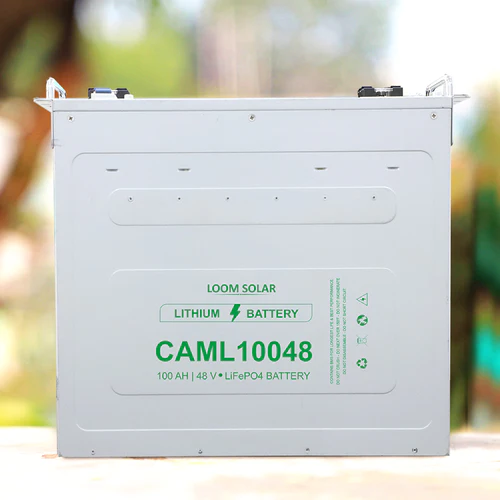
Lithium batteries
Lithium batteries are a type of rechargeable battery that store and release electrical energy. They are commonly used in electronic devices such as smartphones, laptops, and electric vehicles due to their high energy density and long lifespan. It is lightweight and provide a reliable power source, making them popular in various applications
1 note
·
View note
Text
How to run home appliances without electricity
Learn innovative methods to operate household appliances without electricity. Discover alternative energy sources like solar power, wind turbines, or manual tools. Explore efficient strategies such as using propane or biomass for cooking and heating. Master the art of off-grid living and ensure self-sufficiency even in power outages.
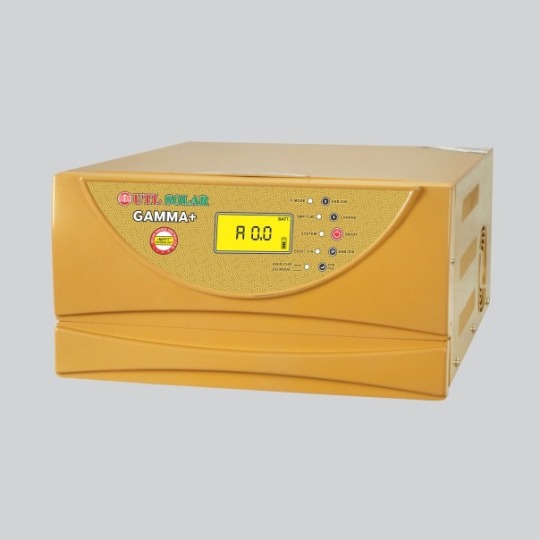
Gamma Plus MPPT Solar Inverter 2600/24 Volt
Gamma + PCU (Power Conditioning Unit) is an integrated unit consists of grid charger, inverter, MPPT Solar Charger. It continuously monitors Battery and Solar voltage as well as Grid and Output voltage with their currents. MPPT based solar charger extracts the maximum power from the solar panels whereby it increases the efficiency of the system. MPPT charger has multistage charging which maintains the battery charging voltage such that it increases the lifespan of battery.
Gamma+ is very easy to install. It fits your budget and also helps to cut your electricity costs. So, it is double advantage to the user!! Unlike other sources of energy, Gamma+ and the Solar Panel do not emit harmful gases and residue. Thus, it helps in keeping the environment clean and healthy.
Key Features
Controller based Design, Pure Sine Wave Built in rMPPT Charge Controller
MPPT is a technique used with photovoltaic(PV) solar systems to maximize power extraction under all conditions.
rMPPT, or maximum power point tracker is an electronic DC to DC converter that optimizes the match between the solar array (PV panels), and the battery bank. To put it simply, they convert a higher voltage DC output from solar panels down to the lower voltage needed to charge batteries.
LCD Display
Gamma+ is available with LCD, for better user interface. It shows battery voltage, charging current, output voltage , output frequency, output load percentage, Input voltage, Input frequency, solar voltage, solar current & consume solar power. It has four switches to configure Operational mode – Grid charger, IT Load, Smf/Tub, boost charging & mode selection.
User Configurable by LCD
All the parameters like battery charging voltage, battery high cut, battery low cut, battery charging current can be adjusted manually by the user as per their choice or requirement.
Charging Multi Stage (Bulk, Absorption & Float) Auto Equalize
To increase the life of battery maintain the gravity and temperature and to increase the backup of battery we use the stages of charging and equalize automatically in a month.
Compatible with DG as an input Source
The frequency of DG output is a very vital parameter that always varies. And if the system is in DG enable mode then the system will be compatible to take any of the frequency as the input source frequency.
Compatible with IT Load
IT mode is used for IT loads which provide protections to IT instruments like computers, printers etc. In IT mode the change over time is very less so that there should not any kind of breakdown in power supply.
Operating Mode Selection
PCU Mode – Priority Solar →Battery → Grid
Smart Mode – Priority Solar → Grid → Battery
Hybrid Mode – Priority for load Grid →Solar →Battery,
Priority for battery charging Solar → Grid
#solar energy#solar inverter#Solar Price#solar system#solar power#solar opposites#https://www.upsinverter.com/utl/solar-inverter/
1 note
·
View note
Text
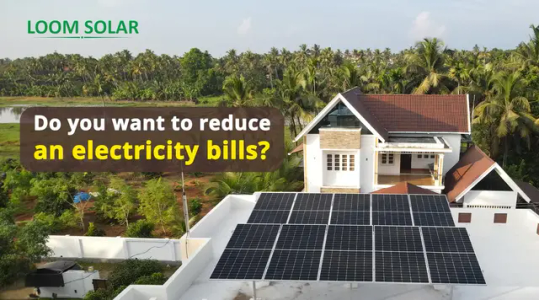
Reduce Electricity Bill
Cut down on electricity bills with Loom Solar inverter – a smart energy solution that optimizes power consumption, leading to significant savings. Embrace efficiency, harness solar energy, and watch your bills shrink. #LoomSolar #EnergySavings
visit - https://www.loomsolar.com/collections/solar-inverters
#loom solar inverter#solar inverter#solar inverter cost#solar inverters#solar panel#Reduce Electricity Bill#Reduce Bill
0 notes